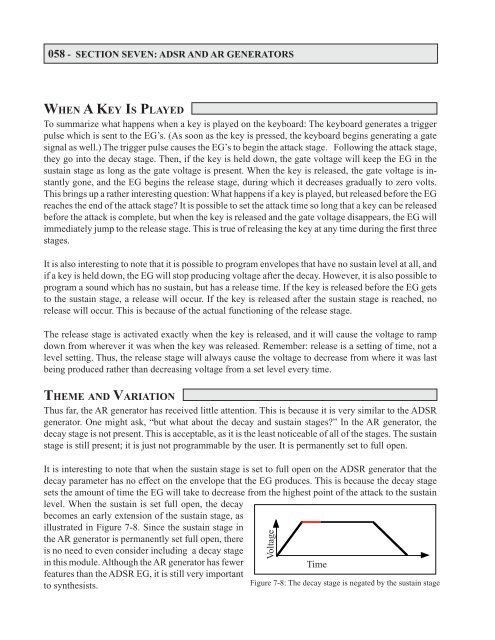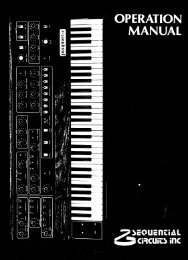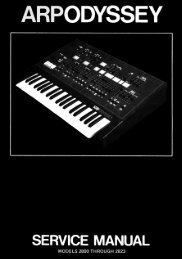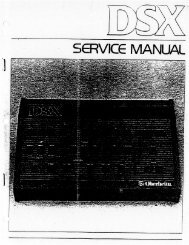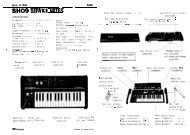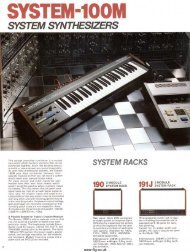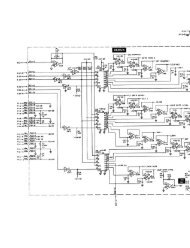ARP2600 - Fundamentals of Music Technology - Cyborgstudio.com
ARP2600 - Fundamentals of Music Technology - Cyborgstudio.com
ARP2600 - Fundamentals of Music Technology - Cyborgstudio.com
You also want an ePaper? Increase the reach of your titles
YUMPU automatically turns print PDFs into web optimized ePapers that Google loves.
058 - SECTION SEVEN: ADSR AND AR GENERATORSWHEN A KEY IS PLAYEDTo summarize what happens when a key is played on the keyboard: The keyboard generates a triggerpulse which is sent to the EG’s. (As soon as the key is pressed, the keyboard begins generating a gatesignal as well.) The trigger pulse causes the EG’s to begin the attack stage. Following the attack stage,they go into the decay stage. Then, if the key is held down, the gate voltage will keep the EG in thesustain stage as long as the gate voltage is present. When the key is released, the gate voltage is instantlygone, and the EG begins the release stage, during which it decreases gradually to zero volts.This brings up a rather interesting question: What happens if a key is played, but released before the EGreaches the end <strong>of</strong> the attack stage? It is possible to set the attack time so long that a key can be releasedbefore the attack is <strong>com</strong>plete, but when the key is released and the gate voltage disappears, the EG willimmediately jump to the release stage. This is true <strong>of</strong> releasing the key at any time during the first threestages.It is also interesting to note that it is possible to program envelopes that have no sustain level at all, andif a key is held down, the EG will stop producing voltage after the decay. However, it is also possible toprogram a sound which has no sustain, but has a release time. If the key is released before the EG getsto the sustain stage, a release will occur. If the key is released after the sustain stage is reached, norelease will occur. This is because <strong>of</strong> the actual functioning <strong>of</strong> the release stage.The release stage is activated exactly when the key is released, and it will cause the voltage to rampdown from wherever it was when the key was released. Remember: release is a setting <strong>of</strong> time, not alevel setting. Thus, the release stage will always cause the voltage to decrease from where it was lastbeing produced rather than decreasing voltage from a set level every time.THEME AND VARIATIONThus far, the AR generator has received little attention. This is because it is very similar to the ADSRgenerator. One might ask, “but what about the decay and sustain stages?” In the AR generator, thedecay stage is not present. This is acceptable, as it is the least noticeable <strong>of</strong> all <strong>of</strong> the stages. The sustainstage is still present; it is just not programmable by the user. It is permanently set to full open.It is interesting to note that when the sustain stage is set to full open on the ADSR generator that thedecay parameter has no effect on the envelope that the EG produces. This is because the decay stagesets the amount <strong>of</strong> time the EG will take to decrease from the highest point <strong>of</strong> the attack to the sustainlevel. When the sustain is set full open, the decaybe<strong>com</strong>es an early extension <strong>of</strong> the sustain stage, asillustrated in Figure 7-8. Since the sustain stage inthe AR generator is permanently set full open, thereis no need to even consider including a decay stagein this module. Although the AR generator has fewerTimefeatures than the ADSR EG, it is still very importantto synthesists.Figure 7-8: The decay stage is negated by the sustain stageVoltage


